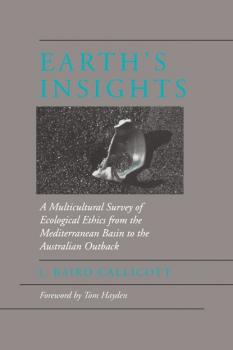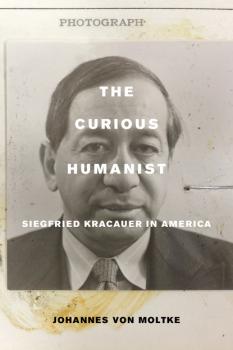ТОП просматриваемых книг сайта:
Философия
Различные книги в жанре Философия, доступные для чтения и скачиванияАннотация
This groundbreaking book successfully fuses the two overlapping traditions of Zen Buddhism and Christianity.Very few Christians who are interested in Zen Buddhism understand the fundamentals of the religion itself. Most of the books which are available on Zen are superficial and fraught with caricatures and erroneous generalizations – concentrating more on meditation than on the real essence of Zen. Now the Christian who has been waiting for a clear and thorough explanation of Zen in terms he can understand has been provided with Zen Way—Jesus Way—a unique inside look at Christianity and Zen Buddhism by Dr. Tucker N. Callaway, a committed Christian missionary who for twenty years has practiced zazen in Japanese temples in an effort to reach the heart of the faith.Calloway has a knack for making philosophical concepts clear to the general reader and begins Zen Way—Jesus Way by presenting the fundamental presuppositions of Zen and several of the concepts which are logically deduced from them. Next he relates some of his experiences in Buddhist temples, while explaining the practical applications of Zen philosophy. Finally he interprets the Jesus Way in a manner that makes possible a genuine comparison with the Zen way.
Аннотация
This guide to sex in Japan demystifies the infamous brothels and parlous of Tokyo and provides a wealth of first-hand information.An important part in any lover's arsenal is an understanding of the background of sex in Japan, an appreciation of the finer points of Japan's culture as it relates to human sexuality, and a familiarity with the vocabulary of love.It generally takes at least two years of energetic (and expensive!) on-the-spot experience to accumulate a working knowledge of Japanese love words. To make things easier, faster, and less expensive, Lover's Guide to Japan includes a selection of words and sentences aimed at acquainting the reader with enough vocabulary to engage in several levels of «pillow talk» with the partner of your choice.Whether you're a newcomer to Japan or an old hand at romance in the Land of the Rising Sun, this guide can be your ticket to after-hours fun. Where to go, what to do, what to say – it's all here. Lover's Guide to Japan gives you instant access to all the (sensual) mysteries of Japan and the Japanese. Once this book shows you what goes on behind those sliding screens, you may never want to leave.
Аннотация
Sex and the Japanese provides a broad look at the changing concepts of sexuality in Japanese culture.From the days of concubines and geishas to the present, sex and sexuality in Japan have been more openly discussed and available than in the West—due for the most part to Shinto, the native religion of Japan that recognizes, celebrates and respects the sensual side of life.The sexual attitudes and customs of present-day Japan continue to reflect this ancient wisdom in ways that are both practical and imaginative. Sex and the Japanese reveals the ins and outs of these attitudes and customs, from the institutions of «love hotels» and erotic massage parlors, weekend trysts at hot spring spas, the use of cell phones and the Internet, to well-publicized date clubs and escort services.Chapters in Sex and the Japanese include:Sex Without SinHeritage of the Fertility CultThe «Romance Gray» PhenomenonPorn for the Male MassesSex Lessons for the LadiesThe Charms of Japanese Women
Аннотация
"Lust will not keep…Something must be done about it." — inscription at the entrance to Yoshiwara For over a hundred years the Western world has heard whispers of the pleasure city, Yoshiwara, set behind its walls in the city of Edo itself, which is today called Tokyo. Here was an eastern red light district, the place for the hedonists, the woman–seekers, the sensual plasure–hunters of old Japan. There, behind moated walls, an erotic Japanese world unmatched by the West was created by beautiful courtesans, geishas, dancers, actors, and artists. To this «floating world» came the hedonists and the sensual pleasure hunters of old Japan. Many myths and legends encircled the secrets of the Yoshiwara, and still do. In time other Japanese cities tried to copy the original, sometimes even calling their district for geishas and courtesans and pretty waitress girls a Yoshiwara. Stephen and Ethel Longstreet use prints and fascinating original sources to trace the rise and fall of this city within a city, a sanctioned preserve of teahouses and brothels that was not abolished until 1958, sketching a vivid, no–holds–bared portrait of social and sexual mores in Japan's capital.
Аннотация
In his monumental 1687 work, <I>Philosophiae Naturalis Principia Mathematica</I>, known familiarly as the <I>Principia</I>, Isaac Newton laid out in mathematical terms the principles of time, force, and motion that have guided the development of modern physical science. Even after more than three centuries and the revolutions of Einsteinian relativity and quantum mechanics, Newtonian physics continues to account for many of the phenomena of the observed world, and Newtonian celestial dynamics is used to determine the orbits of our space vehicles.<BR /><BR /> This authoritative, modern translation by I. Bernard Cohen and Anne Whitman, the first in more than 285 years, is based on the 1726 edition, the final revised version approved by Newton; it includes extracts from the earlier editions, corrects errors found in earlier versions, and replaces archaic English with contemporary prose and up-to-date mathematical forms.<BR /><BR /> Newton's principles describe acceleration, deceleration, and inertial movement; fluid dynamics; and the motions of the earth, moon, planets, and comets. A great work in itself, the <I>Principia</I> also revolutionized the methods of scientific investigation. It set forth the fundamental three laws of motion and the law of universal gravity, the physical principles that account for the Copernican system of the world as emended by Kepler, thus effectively ending controversy concerning the Copernican planetary system.<BR />  <BR /> The translation-only edition of this preeminent work is truly accessible for today's scientists, scholars, and students.
Аннотация
The environmental crisis is global in scope, yet contemporary environmental ethics is centered predominantly in Western philosophy and religion. <i>Earth's Insights</i> widens the scope of environmental ethics to include the ecological teachings embedded in non-Western worldviews. J. Baird Callicott ranges broadly, exploring the sacred texts of Islam, Hinduism, Jainism, Taoism, Confucianism, and Zen Buddhism, as well as the oral traditions of Polynesia, North and South America, and Australia. He also documents the attempts of various peoples to put their environmental ethics into practice. Finally, he wrestles with a question of vital importance to all people sharing the fate of this small planet: How can the world's many and diverse environmental philosophies be brought together in a complementary and consistent whole?
Аннотация
Despite enormous changes in patterns of dating and courtship in twenty-first-century America, contemporary understandings of romance and intimacy remain firmly rooted in age-old assumptions of gender difference. These tenacious beliefs now vie with cultural messages of gender equality that stress independence, self-development, and egalitarian practices in public and private life.Through interviews with heterosexual and LGBTQ individuals, Ellen Lamont’s The Mating Game explores how people with diverse sexualities and gender identities date, form romantic relationships, and make decisions about future commitments as they negotiate uncertain terrain fraught with competing messages about gender, sexuality, and intimacy.
Аннотация
Conservative and progressive religious groups fiercely disagree about issues of sex and gender. But how did we get here? Melissa J. Wilde shows how today’s modern divisions began in the 1930s in the public battles over birth control and not for the reasons we might expect. By examining thirty of America’s most prominent religious groups—from Mormons to Methodists, Southern Baptists to Seventh Day Adventists, and many others—Wilde contends that fights over birth control had little do with sex, women’s rights, or privacy.Using a veritable treasure trove of data, including census and archival materials and more than 10,000 articles, statements, and sermons from religious and secular periodicals, Wilde demonstrates that the push to liberalize positions on contraception was tied to complex views of race, immigration, and manifest destiny among America’s most prominent religious groups. Taking us from the Depression era, when support for the eugenics movement saw birth control as an act of duty for less desirable groups, to the 1960s, by which time most groups had forgotten the reasons behind their stances on contraception (but not the concerns driving them), Birth Control Battles explains how reproductive politics divided American religion. In doing so, this book shows the enduring importance of race and class for American religion as it rewrites our understanding of what it has meant to be progressive or conservative in America.
Аннотация
In the United States, egg donation for reproduction and egg donation for research involve the same procedures, the same risks, and the same population of donors—disadvantaged women at the intersections of race and class. Yet cultural attitudes and state-level policies regarding egg donation are dramatically different depending on whether the donation is for reproduction or for research. Erin Heidt-Forsythe explores the ways that framing egg donation itself creates diverse politics in the United States, which, unlike other Western democracies, has no centralized method of regulating donations, relying instead on market forces and state legislatures to regulate egg donation and reproductive technologies.<BR />  <BR /> Beginning with a history of scientific research around the human egg, the book connects historical debates about the “natural” (reproduction) and “unnatural” (research) uses of women’s eggs to contemporary political regulation of egg donation. Examining egg donation in California, New York, Arizona, and Louisiana and coupled with original data on how egg donation has been regulated over the last twenty years, this book is the first comprehensive overview and analysis of the politics of egg donation across the United States.
Аннотация
During the Weimar Republic, Siegfried Kracauer established himself as a trenchant theorist of film, culture, and modernity, and he is now considered one of the key thinkers of the twentieth century. When he arrived in Manhattan aboard a crowded refugee ship in 1941, however, he was virtually unknown in the United States and had yet to write his best-known books, <I>From Caligari to Hitler</I> and <I>Theory of Film</I>. Johannes von Moltke details the intricate ways in which the American intellectual and political context shaped Kracauer’s seminal contributions to film studies and shows how, in turn, Kracauer’s American writings helped shape the emergent discipline. Using archival sources and detailed readings, von Moltke asks what it means to consider Kracauer as the New York Intellectual he became in the last quarter century of his life. Adopting a transatlantic perspective on Kracauer’s work, von Moltke demonstrates how he pursued questions in conversation with contemporary critics from Theodor Adorno to Hannah Arendt, from Clement Greenberg to Robert Warshow: questions about the origins of totalitarianism and the authoritarian personality; about high and low culture; about liberalism, democracy, and what it means to be human. From these wide-flung debates, Kracauer’s own voice emerges as that of an incisive cultural critic invested in a humanist understanding of the cinema. <BR />










